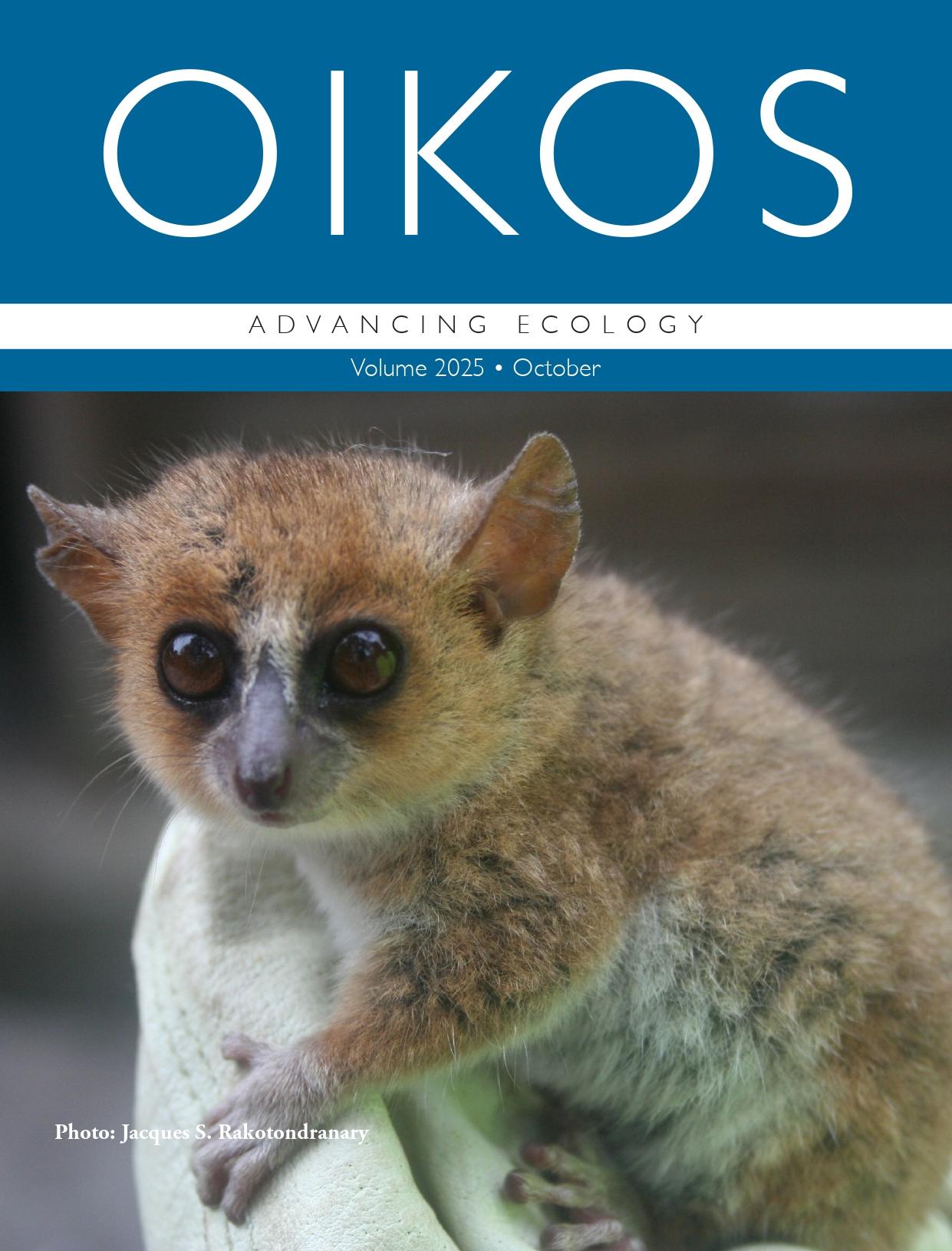PROTECT YOUR DNA WITH QUANTUM TECHNOLOGY
Orgo-Life the new way to the future Advertising by AdpathwayJulissa Roja-Sandoval, University of Connecticut, discusses her article: Plant-pollinator interactions in a tropical dry forest: Spatiotemporal shifts in floral trait importance
When we think about flowers and pollinators, it’s easy to imagine a perfect match: hummingbirds visiting red tubular flowers, bees buzzing around open yellow blooms, or butterflies sipping nectar from flowers with long tubes. For decades, scientists have described these recurring patterns as “Pollination Syndromes”, supporting the idea that plants evolve suites of traits (like color, shape, or scent) that match the preferences of specific pollinators.
But reality, as it turns out, is more complicated. Our new study in the tropical dry forest of Puerto Rico reveals that these floral “rules of attraction” aren’t fixed. Instead, the traits that matter most to pollinators shift across seasons, habitats, and pollinator groups, showing that plant–pollinator interactions are far more dynamic and flexible than once thought.
 Strymon acis visiting the flowers of Coccoloba diversifolia. Photo credit: Daniel Anglés.
Strymon acis visiting the flowers of Coccoloba diversifolia. Photo credit: Daniel Anglés.A living laboratory – Puerto Rico’s dry forest
We carried out this research in Guánica dry forest, a UNESCO Biosphere Reserve on Puerto Rico’s southern coast. This forest is a global biodiversity hotspot, famous for its mix of cacti, flowering shrubs, and trees that have lush growth during the rainy season and must cope with extreme drought in the dry season. It’s also home to an exceptionally diverse pollinator community.
Over two years, our team monitored 113 flowering plant species and recorded nearly 40,000 pollinator visits. Using both direct observations and video recordings, we identified the main visitors ranging from butterflies and flies, to wasps, native bees, and the non-native honeybee, Apis mellifera. Alongside these observations, we measured a wide array of floral traits such as flower size, color, scent, nectar, and shape.
Examples of flowers and flower visitors observed in Guanica dry forest: (a) Krameria ixine, (b) Centrosema virginianum, (c) Quadrella cynophallophora, (d) Jacquemontia pentanthos, (e) Strumpfia maritima, (f) Jatropha gossypiifolia, (g) Portulaca rubricaulis, (h) Stenostomum acutatum, (i) Megachile holosericea on Corchorus hirsutus, (j) Apis mellifera on Guaiacum officinale, (k) Lassiglosum sp. on Croton discolor, (l) Agraulis vanillae on Lantana camara, (m) Megachile luctifera on Tephrosia cinerea, (n) Prionyx thomae on Erithalis fruticosa (o) Villa lateralis on Turnera difusa, (p) Horama pretus on Croton lucidus. Photo credits: Daniel Anglés-Alcázar & Julissa Rojas-Sandoval.
Bringing machine learning into the field
To make sense of this massive dataset, we turned to machine learning models, a type of artificial intelligence that can detect complex patterns in large amounts of data. Unlike traditional approaches, machine learning can reveal subtle and nonlinear relationships between floral traits and pollinator groups, helping us understand not just which pollinators visit which plants, but why.
The results were striking. While some findings lined up with classical pollination syndromes, for instance, butterflies preferring tubular flowers or bees favoring gullet-shaped blooms, many patterns were context-dependent. Traits that were highly important in one habitat or season often dropped in importance in another. For example, odor mattered most in the dry season, when strong scents may help pollinators locate scarce resources. By contrast, color and anther position (where pollen is located) rose in importance during the rainy season, when flowers were more abundant.
 A Palpada vinetorum fly visits the flowers of Croton discolor, a key native species in Caribbean dry forests. As highlighted in our study, flies like this one were among the most reliably predicted pollinator groups by the machine learning model, emphasizing their important and often underappreciated role as pollinators.
A Palpada vinetorum fly visits the flowers of Croton discolor, a key native species in Caribbean dry forests. As highlighted in our study, flies like this one were among the most reliably predicted pollinator groups by the machine learning model, emphasizing their important and often underappreciated role as pollinators.The dominance of non-native honeybees
One group stood out above the rest: the introduced honeybee, Apis mellifera. This single species accounted for more than half of all pollinator visits and was the primary pollinator for over a third of the plant species we studied. Honeybees consistently preferred flowers with exposed anthers, making them highly predictable in our models. This dominance raises important ecological questions. While honeybees are effective pollinators, their overwhelming presence in habitats across this dry forest suggests that they may be displacing native pollinators that rely on specialized floral traits. Over time, this could reduce the diversity and resilience of pollination networks in tropical forests.
Why this matters
Our study challenges the idea of pollination syndromes as fixed “rules.” Instead, floral traits act more like shifting signals whose importance changes depending on when and where interactions occur. This flexibility may help explain how tropical plant–pollinator systems persist in the face of strong environmental fluctuations, but it also highlights vulnerabilities. Climate change, habitat disturbance, and invasive species are all reshaping these interactions. If generalist pollinators like honeybees continue to dominate, plants that depend on more specialized relationships could be at risk.
 A Lasioglossum bee approaches a flower of Malvastrum corchorifolium, a common native plant species in disturbed tropical dry forest habitats. Photo credits: Daniel Anglés-Alcázar.
A Lasioglossum bee approaches a flower of Malvastrum corchorifolium, a common native plant species in disturbed tropical dry forest habitats. Photo credits: Daniel Anglés-Alcázar.By combining fieldwork with machine learning, we’ve shown that plant–pollinator interactions are dynamic, context-dependent, and surprisingly adaptable. Recognizing this flexibility is crucial, not only for understanding how ecosystems function today but also for predicting how they might change tomorrow. In a rapidly warming world, where both plants and pollinators face mounting pressures, appreciating the shifting “rules of attraction” may be key to conserving the biodiversity and ecological services we all depend on.


 18 hours ago
2
18 hours ago
2





















 English (US) ·
English (US) ·  French (CA) ·
French (CA) ·